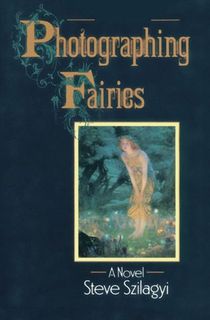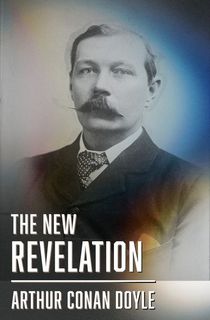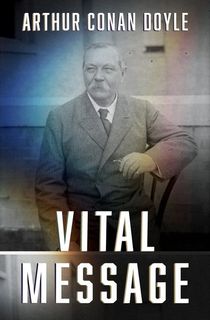Sherlock Holmes was a coldly logical thinking machine who could find a rational explanation for every phenomenon from ghostly hellhounds to vampires. The great detective’s creator, Sir Arthur Conan Doyle had quite a different approach to life, and, especially, to death.
In 1934, in a theatre in New Bond Street, London, Sir Arthur Conan Doyle asked a hushed audience to “take care of my boys and my good wife, Jean”. The moment was captured for posterity by a tape recorder and is now held in the British Library.
There is nothing peculiar in any of that, except that the creator of Sherlock Holmes had been dead for four years. He was speaking to his audience through a spirit medium named Noah Zerdon. Therefore, most people would conclude that there is no chance that the voice on the tape is that of the great detective writer. One man who would undoubtedly have argued to the contrary was Sir Arthur Conan Doyle himself.
Conan Doyle passionately believed that the dead could communicate with the living through an earthly conduit or medium—such as Noah Zerdon. Sometimes the message came through a mysterious knocking, at others they were written on slates by an unseen hand, or perhaps the medium would fall into a trance and begin scribbling furiously with pen and paper, taking dictation from beyond the grave. Spirits might also appear in the form of luminous ectoplasm from the mouths of mediums, or materialize on photographs taken in darkened rooms.
To Conan Doyle, it was all conclusive proof of the afterlife.
The craze for spiritualism had begun in the United States in 1848 when the teenage Fox sisters from New York State declared that they were able to communicate with the spirit world via a code language of tapping. Sir Arthur’s interest in the subject had begun as a student back in the 1880s. In 1893 he had joined the Society for Psychical research. But it was his relationship with the woman who would become his second wife, Jean Leckie, and the horrors of World War One, in which his eldest son Kingsley was killed, which turned Conan Doyle into a true believer.
He was not alone. Over one million British soldiers perished in the conflict. A further 250.000 Britons died in the Spanish Flu epidemic that followed shortly after the war ended. The nation was grief-stricken and people from all walks of life looked to spiritualists for comfort.
Never a man to do things by half-measures, Sir Arthur threw all his boundless energy into proving that spiritualism was real. It was a task he believed was the most important thing that he had ever set himself to.

The History of Spiritualism
He would later say that he would sacrifice his entire literary reputation if it would lead to a greater acceptance of the truth of spiritualism. When he spoke of seeing and conversing with the dead, Sir Arthur told reporters, “I am not talking of something I believe, or something I think, but of something I know”.
And that was the problem. Sir Arthur so wanted to believe that he could speak to his dead son that he buried all doubt. Holmes, his greatest creation, would have studied what he saw, gathered evidence carefully, and then analyzed it without partiality. Conan Doyle, by contrast, simply looked for reasons to believe. Nowadays we’d call it confirmation bias, back in Britain in the 1920s they had another word for it—they said Sir Arthur had gone “soft in the head”.

1922 photograph of Doyle by spirit photographer Ada Deane
Photo Credit: Wikimedia Commons Public DomainWhat followed was a series of embarrassing incidents. There was the meeting with a veiled medium who, after being tied to a chair, made a luminous ghostly apparition appear behind her. Conan Doyle pronounced himself impressed. But the medium was a conjuror named Molly Wynter, aided by her partner, stage magician Percy Tibbles. The whole thing had been a trick.
Sir Arthur was also convinced by “spirit photographs” that seemed to show ghosts. His faith was unshaken even after the magician William Marriott produced a series of fake spectral photos while all the while under Conan Doyle’s close supervision.

Cottingley fairies
Photo Credit: Wikimedia Commons Public DomainThe great writer had shown himself to be dangerously credulous when it came to photos already. In 1919 he’d declared as genuine some photos showing a couple of young girls in the Yorkshire village of Cottingley playing with fairies. He even wrote a book on the subject in which he claimed the appearance of the fairies was a harbinger of a new age of revelation. The photos were a hoax, and not even a very good one.

Photographing Fairies
In 1922, Sir Arthur further alarmed his admirers by claiming in newspaper articles that Earl Caernarvon had died after visiting the freshly discovered tomb of Tutankhamen, not from blood poisoning as the doctors said, but because he had been attacked by spirit warriors guarding the pharaoh’s tomb.
Harry Houdini had been a good friend of Sir Arthur, but he lost all patience with him over spiritualism. To Houdini, the spiritualists were con artists who preyed on the broken-hearted. The great showman had consulted mediums when his beloved mother had died and been shocked and enraged by the cheap stunts they pulled. He set about exposing as many as he could, including a number that Conan Doyle had pronounced to be the real thing. Sir Arthur hit back suggesting that Houdini’s stage trickery had made him cynical, a bitter man who had lost faith in humanity.
When asked about Conan Doyle, Houdini was scathing. He described his former friend as “easily bamboozled” and speculated that he had gone “senile”.

The New Revelation
Despite Houdini’s comments, Sir Arthur appeared to be in good mental health. He’d continue writing Sherlock Holmes stories until three years before his death in 1930. Yet his judgment certainly seemed to many to be impaired. Some pointed to the effects of the tragic death of his son in a war that Sir Arthur had loudly and patriotically supported (he’d thought it would be a terrific adventure, not a bloodbath). More wondered about the influence of his much younger second wife.
Jean Leckie was a committed spiritualist and a medium who claimed to be able to converse with the dead. Conan Doyle’s relationship with her was tinged with controversy. The couple’s friendship had begun when Conan Doyle’s first wife Louisa was slowly dying from tuberculosis. They claimed their relationship had remained platonic for ten years, though not everyone was convinced. Amongst them was Conan Doyle’s brother-in-law, the writer E W Hornung, who had an angry encounter with Sir Arthur after he’d seen him parading around Lord’s Cricket Ground with Leckie.
When the couple married a year after Louisa’s death, tongues wagged. It was noted by some satirical London wits that the one person who (mysteriously) never tried to speak to Sir Arthur from beyond the grave was the unfortunate Louisa.

Vital Message
Whatever anyone thought, it is plain that Sir Arthur’s belief in spiritualism was sincere and heart felt (he wrote at least fifteen books on the subject). He had become famous by creating the man with the world’s most rational mind, if he acted a little irrationally himself at times, then that, perhaps, was his own business.
